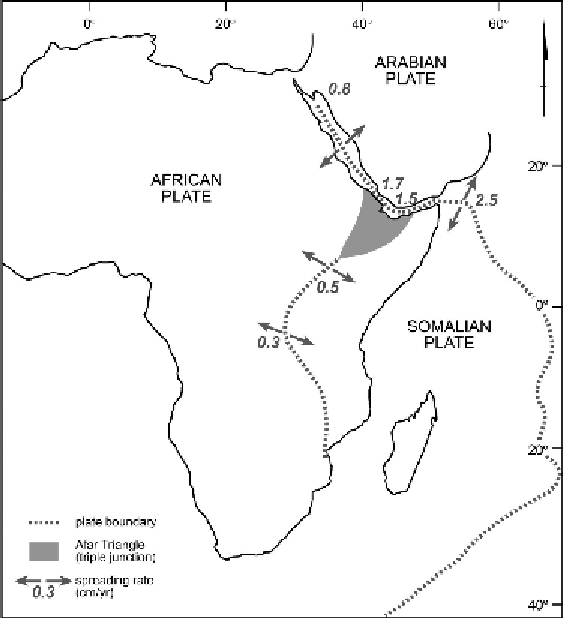Geoscience Reference
In-Depth Information
Figure 18.5. African and Arabian lithospheric plate movements and location of the
East African Rift. (After Williams et al., 2004.)
tectonic lineaments, some of them already evident in the Precambrian basement rocks
(Adamson et al.,
1993
). It also ushered in a long interval of erosion, estimated to have
lasted for 6-10 million years, during which the Oligocene regional truncation surface
was fashioned (Avni et al.,
2012
). Continued and accelerating upward expansion of
the Afar plume during the late Oligocene and early Miocene caused rifting of the Red
Sea, whose origin dates back to around 25 Ma. During the early-middle Miocene, the
Dead Sea Transform originated as a left-lateral strike-slip plate boundary along a zone
of pre-existing crustal weakness (Avni et al.,
2012
). Widening of the Red Sea Rift
caused disruption of the initial Afro-Arabian plate and the formation of two separate
plates: the African plate and the Arabian plate. The Red Sea is currently widening at a
rate (from north to south) of 0.8-1.7 cm/year and the Gulf of Aden at 1.5-2.5 cm/year
(Williams et al.,
2004
).
Figure 18.5
shows current directions of movement of the
African and Arabian plates.
The Afar Desert lies within the Afar rift and, together with Iceland, is one of the
very rare places on earth where oceanic crust is forming today on land. The Afar,

